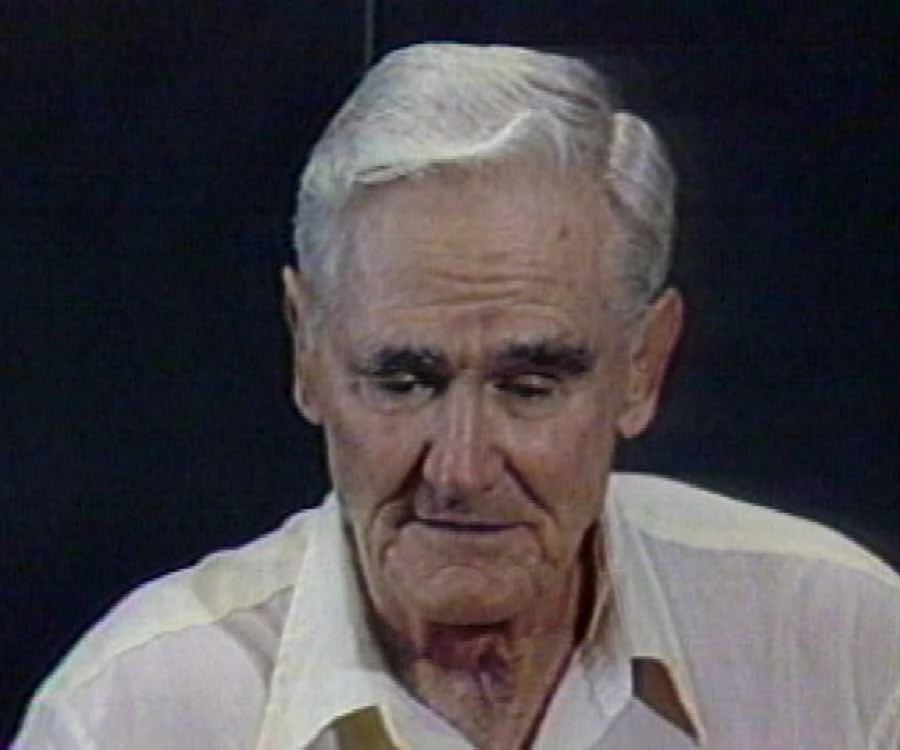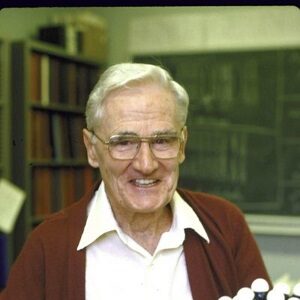Donald James Cram was a distinguished American scientist who shared the Nobel Prize in Chemistry in 1987 with Charles J. Pedersen and Jean-Marie Lehn “for their creation and usage of compounds having structure-specific interactions of remarkable selectivity.” The field of ‘host-guest chemistry’ was founded by the trio. Cram earned a bachelor’s degree in chemistry from Rollins College in Florida, and a master’s degree in organic chemistry from the University of Nebraska. He got his Ph.D. from Harvard University in 1947, and following three months as a postdoctoral scholar at Massachusetts Institute of Technology, he joined the faculty of the University of California, Los Angeles, where he rose through the ranks to become a full Professor by 1956. He taught almost 12,000 undergraduates, supervised approximately 120 doctorate and postdoctoral students, and wrote over 400 papers and eight books in his forty-year career. He stayed dedicated to chemical study till the conclusion of his remarkable academic career. He developed the ‘Cram’s Rule,’ a method for determining the outcome of nucleophilic attack on carbonyl compounds. He also constructed a range of variously shaped molecules that could bind specific atoms to themselves due to their corresponding three-dimensional structure, building on Pedersen’s original synthesis of ‘crown ethers.’
Childhood and Adolescence
Donald J. Cram was born on April 22, 1919, in Chester, Vermont, to William, a Scottish immigrant, and Joanna, a German émigré. His parents had moved from Ontario, Canada to rural Chester before he was born. He was their fourth child and the only male child in a family of three females.
Joanna, his mother, had always been a vivacious individual with a rebellious tendency. On the other side, William was a passionate cavalry officer who went on to become a wealthy lawyer. Unfortunately, he died with pneumonia before Cram reached the age of four. As a result, his mother was left to raise his four children on her alone.
Donald J. Cram began his education at home when he was four and a half years old. The children’s mother instilled in them the habit of reading. He was soon able to read a variety of children’s books on his own.
The family moved to Brattleboro, Vermont, two years later, where he was raised on Aid to Dependent Children. He had an exciting childhood, and because he was brilliant and curious, he was able to support his music tuition by working odd jobs. He had worked at least eighteen different jobs by the time he turned eighteen.
He later stated that his true education took place outside of the classroom, “in a secret world of books and brooks.” He read much, including works by Dickens, Kipling, Scott, Shaw, and Shakespeare, and spent time in nature.
Despite this, he went to Winwood High School in Long Island, New York, where he took a chemistry course, taught himself geometry, and obtained a Rollins College National Honorary Scholarship.
Career of Donald J. Cram
Donald J. Cram attended Rollins College in Winter Park, Florida, from 1938 to 1941. Aside from his usual studies, he worked as a chemistry department assistant, sang in the theatre and chapel choir, produced a modest radio program, and even got his pilot’s license.
He worked for the National Biscuit Company in New York City during the summers of 1938–1941, first as a salesperson, then as a moisture and fat content assessor of cheeses. He learned about ethnic groups and major city street culture during his time in sales.
He quickly gained a reputation at Rollins for creating his own chemistry apparatus. In 1941, he earned a B.S. in chemistry and decided to pursue a career in academic chemical research.

Donald J. Cram
He received his M.S. in Organic Chemistry from the University of Nebraska in 1942, under the guidance of Dr. Norman O. Cromwell.
He worked in Merck & Co laboratory from 1942 to 1945, during World War II, researching penicillin alongside mentor Dr. Max Tishler.
Dr. Tishler arranged for him to attend Harvard University when the war ended in 1945. He earned his Ph.D. in Organic Chemistry in 1947, thanks to a National Research Council Fellowship. Professor Louis Fieser, of Harvard University, supervised the thesis. Professors Paul D. Bartlett and Robert B. Woodward also impacted him.
He spent three months as an American Chemical Society postdoctoral scholar at the Massachusetts Institute of Technology after getting his doctorate in 1947, working for Professor John D. Roberts.
He then went to the University of California, Los Angeles, as an Assistant Professor (UCLA). He was appointed to full Professor in 1957. In 1985, he was named the first S. Winstein Professor of Chemistry at UCLA, a position he held until 1995.
He was well-liked by his students as a teacher. He taught about 12,000 undergraduates, supervised around 120 Ph.D. and postdoctoral students, and wrote over 400 papers and eight books during his 40 years at UCLA.
Major Projects of Donald J. Cram
Donald J. Cram was a pioneer in the study of phenonium ions, asymmetric induction, carbanions, paracyclophanes, and the use of stereochemistry to understand reaction mechanisms.
In 1952, he developed the ‘Cram’s Rule,’ which outlined a mechanism for estimating the outcome of nucleophilic attack on carbonyl compounds.
He built on Charles Pedersen’s groundbreaking synthesis of ‘crown ethers.’ Cram successfully created a range of compounds that could bind selective atoms and molecules to themselves owing to their corresponding three-dimensional structure after Pedersen found crown ethers, molecules that can retain certain metallic atoms. It became possible to make chemical compounds through chemical reactions as a result of this.
He mentored graduate, doctoral, and post-doctoral students from 21 nations and authored over 400 research papers and eight books on Organic Chemistry.
Achievements & Awards
He was inducted into the National Academy of Sciences in 1961.
He won the ACS Award for Creative Work in Synthetic Organic Chemistry in 1965.
He was inducted into the American Academy of Arts and Sciences in 1967.
In 1974, he was awarded California Scientist of the Year and received the ACS Cope Award for Distinguished Achievement in Organic Chemistry.
In 1985, he received the ACS Tolman Award for Southern California and the ACS Willard Gibbs Medal for the Chicago Section.
He also received the prestigious Roger Adams Award and was named the first proprietor of the Saul Winstein Chair in Organic Chemistry at UCLA in 1985.
In 1987, he shared the Nobel Prize in Chemistry with Charles J. Pedersen and Jean-Marie Lehn “for their creation and application of compounds having structure-specific interactions of high selectivity.”
In 1992, he won the National Academy of Sciences Award in Chemical Science, and in 1993, he was awarded the National Medal of Science.
Personal History and Legacy
Cram has two marriages. Jean Turner, his first wife, was a social worker with a master’s degree from Columbia University. Dr. Jane Maxwell, his second wife, is a former Professor of Chemistry at Mt. Holyoke College.
He was a voracious reader who appreciated both ancient and contemporary literature. He enjoyed sports such as surfing, tennis, and skiing in his spare time. He also enjoyed playing the guitar and singing folk melodies.
At the age of 82, he died of cancer on June 17, 2001.
Estimated Net Worth
Donald is one of the wealthiest chemists and one of the most well-known. Donald J. Cram’s net worth is estimated to be $1.5 million, according to Wikipedia, Forbes, and Business Insider.
Trivia
He was instrumental in the advancement of UCLA’s Chemistry and Biochemistry Department. He was a lively young man who entertained his classmates by strumming his guitar and singing folk melodies.
When he won the Nobel Prize, a delegate from the Royal Swedish Academy of Sciences was summoned to convey his congratulations. By accident, the call was forwarded to Donald Cram, a carpet cleaner in California. The carpet cleaner received his two minutes of fame as a result.


